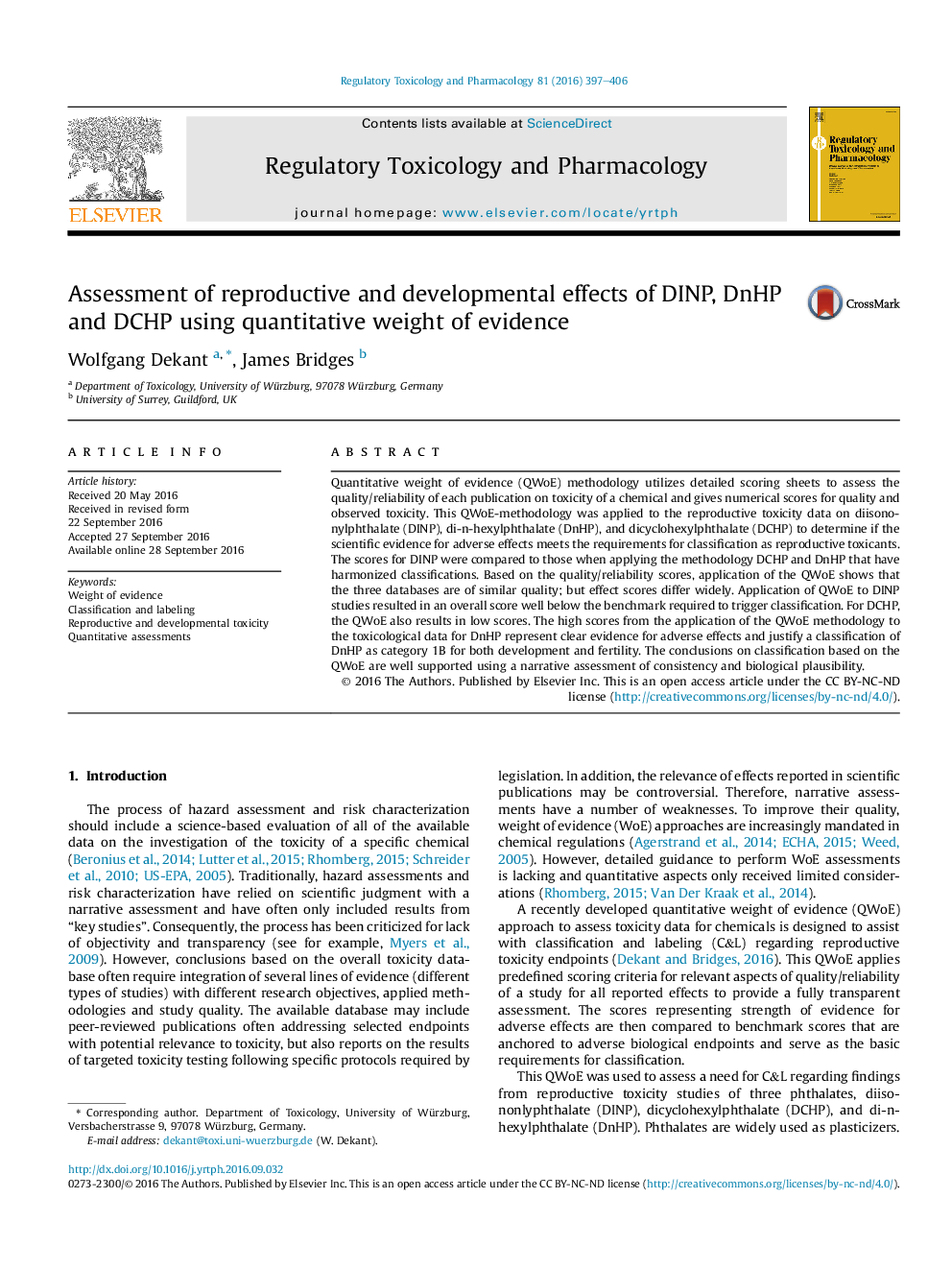| Article ID | Journal | Published Year | Pages | File Type |
|---|---|---|---|---|
| 5855792 | Regulatory Toxicology and Pharmacology | 2016 | 10 Pages |
â¢QWoE to justify classification and labelling for reproductive toxicology.â¢The phthalates DINP, DnHP, and DCHP are used to exemplify the utility of the QWoE.â¢No support for classification of DINP regarding development and fertility.â¢Support of classification of DnHP as cat 1 toxicant for development and fertility.
Quantitative weight of evidence (QWoE) methodology utilizes detailed scoring sheets to assess the quality/reliability of each publication on toxicity of a chemical and gives numerical scores for quality and observed toxicity. This QWoE-methodology was applied to the reproductive toxicity data on diisononylphthalate (DINP), di-n-hexylphthalate (DnHP), and dicyclohexylphthalate (DCHP) to determine if the scientific evidence for adverse effects meets the requirements for classification as reproductive toxicants. The scores for DINP were compared to those when applying the methodology DCHP and DnHP that have harmonized classifications. Based on the quality/reliability scores, application of the QWoE shows that the three databases are of similar quality; but effect scores differ widely. Application of QWoE to DINP studies resulted in an overall score well below the benchmark required to trigger classification. For DCHP, the QWoE also results in low scores. The high scores from the application of the QWoE methodology to the toxicological data for DnHP represent clear evidence for adverse effects and justify a classification of DnHP as category 1B for both development and fertility. The conclusions on classification based on the QWoE are well supported using a narrative assessment of consistency and biological plausibility.
